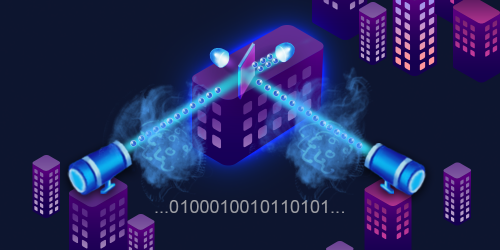Securing a Wireless Link with Quantum Physics
A global internet invulnerable to hackers may be a ways off, but a new experiment brings this goal one step closer. Relying in part on techniques used to sharpen up images from ground-based telescopes, researchers in China have implemented a type of secure quantum communications protocol—known as measurement-device-independent quantum key distribution (MDI-QKD)—across a wireless link connecting two users nearly 20 km apart in a Shanghai neighborhood [1].
Quantum communication channels are susceptible to malicious tampering through imperfections in the measuring devices. MDI-QKD provides perfectly secure communication by having users send light signals to a central node where photon interference is measured. If the interference data agree with expectations, the channel is secure. While other groups have implemented MDI-QKD over optical fibers, no one had yet done so over a wireless channel, where atmospheric turbulence makes it difficult to interfere photons.
To solve this problem, a group led by Jian-Wei Pan, from the University of Science and Technology of China, and colleagues developed a specialized adaptive optics system, in which separate laser beams traveling between users and the central node provided a means of characterizing and correcting for turbulence. The central measurement hub also siphoned off a fraction of incoming photons to check and compensate for timing stability across the link. This setup allowed the team to interfere photons and thus generate secure keys that could be shared between the users.
While many technical challenges remain, the team says that this demonstration is an important milestone toward creating a satellite-based MDI-QKD communications network. In the meantime, the team notes that their setup can also be used to ensure reliable long-distance open-air channels in various quantum experiments.
–Christopher Crockett
Christopher Crockett is a freelance writer based in Arlington, Virginia.
References
- Y. Cao et al., “Long-distance free-space measurement-device-independent quantum key distribution,” Phys. Rev. Lett. 125, 260503 (2020).




